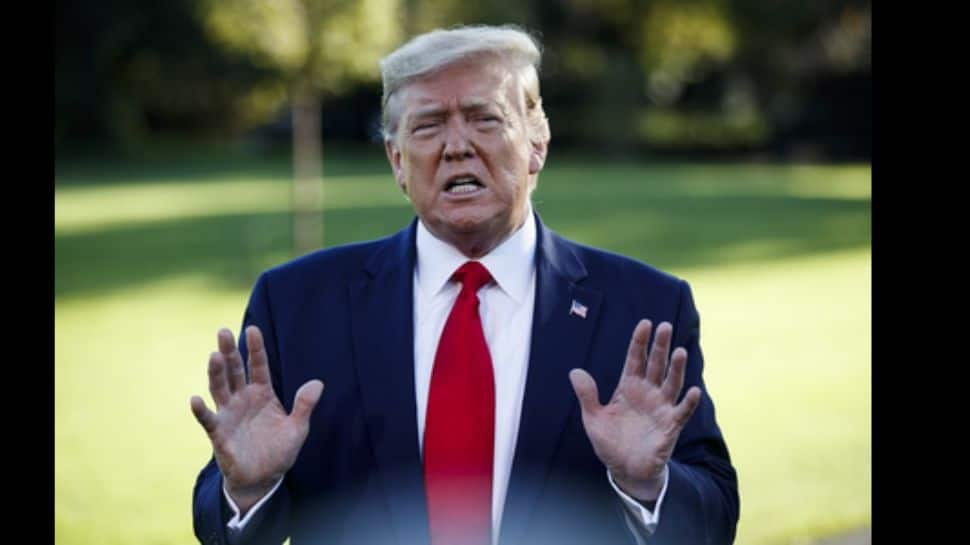A recently reported development suggests that former US President Donald Trump has quietly approved a comprehensive 28-point proposal aimed at ending the ongoing conflict between Russia and Ukraine. According to NBC News, which cites a senior administration official, key members of Trump’s team have been working discreetly over the past several weeks to shape this peace framework. The initiative has involved confidential discussions with Russian envoy Kirill Dmitriev as well as Ukrainian officials, reflecting a strategic and behind-the-scenes diplomatic effort reminiscent of Trump’s earlier 20-point Gaza peace plan. This previous plan served as a partial inspiration for the new proposal targeting the Russia-Ukraine war.
The peace plan is reportedly being led by US Special Envoy to the Middle East, Steve Witkoff. It is structured around four major components: first, achieving peace in Ukraine by ending hostilities; second, providing security guarantees to the involved parties; third, ensuring broader stability across Europe; and fourth, outlining the future of US diplomatic and strategic relations with both Russia and Ukraine. Despite confirmation from officials that Trump has approved the plan, further details remain confidential as the proposal is still in draft form and subject to negotiation among all key stakeholders.
Three US officials speaking to NBC News highlighted that Ukraine has not yet been formally presented with the proposal. The timing of the plan’s completion coincided with a recent visit to Kyiv by a US Army delegation. This delegation, which arrived in the Ukrainian capital on a Wednesday, had two primary objectives: to discuss military strategy and technological support needs directly with Ukrainian leaders, and to help revive a peace process that has largely stalled amid the protracted conflict. The delegation’s visit signals a renewed US effort to engage more deeply with Ukraine on both defense matters and diplomatic initiatives.
Since the last major peace discussions between Trump and Russian President Vladimir Putin in August, which took place in Alaska, negotiations have been at an impasse. The conflict’s continuation has been marked by Russia’s dismissal of Trump’s call for an immediate cessation of hostilities last month. This rejection led to the cancellation of a planned summit in Hungary and the imposition of sanctions by Trump against Russia’s two largest oil companies. These developments underscore the ongoing challenges in brokering peace despite diplomatic overtures.
The Russia-Ukraine war itself began in February 2022 when Russia launched a full-scale invasion of Ukraine, triggering Europe’s largest conflict in decades. Since then, intense fighting has persisted, particularly in eastern and southern Ukraine. The conflict has involved relentless drone strikes, missile attacks, and fierce ground battles that have devastated numerous towns and displaced millions of civilians. With neither side able to secure decisive military victories, the humanitarian toll continues to mount, drawing international concern and calls for a peaceful resolution.
The newly drafted peace plan is therefore being closely scrutinized by global observers and policymakers for any indication that the long and brutal conflict might finally begin to de-escalate. While the plan’s specifics remain under wraps, its multi-faceted approach—combining immediate conflict resolution with long-term security and diplomatic frameworks—reflects an attempt to address the complex dynamics fueling the war.
The involvement of Steve Witkoff, a US envoy with experience in Middle East diplomacy, suggests a deliberate strategy to apply lessons learned from previous peace initiatives to the Russia-Ukraine context. The four pillars of the proposal—peace in Ukraine, security guarantees, European stability, and future US-Russia-Ukraine relations—highlight the interconnected nature of regional and global security interests. Ensuring security guarantees is particularly crucial given the deep mistrust and strategic rivalry between Russia and Western countries.
Meanwhile, the US Army delegation’s visit to Kyiv represents a tangible step to support Ukraine’s defense capabilities and to facilitate dialogue that might unblock stalled negotiations. Discussions on military strategy and technology needs not only aim to strengthen Ukraine’s position on the battlefield but also serve as a foundation for restoring diplomatic momentum. This dual approach—combining military support with peace talks—reflects the broader international effort to bring about a sustainable resolution.
Despite these efforts, the path to peace remains fraught with difficulties. Russia’s rejection of ceasefire calls and the imposition of sanctions indicate that mutual distrust and competing interests continue to hinder progress. The cancellation of diplomatic summits further illustrates the fragile state of negotiations. Nonetheless, the existence of a detailed peace proposal approved by a former US president introduces a new dynamic that could influence ongoing and future diplomatic endeavors.
The international community remains vigilant, recognizing that the conflict’s resolution is vital not only for Ukraine and Russia but also for

